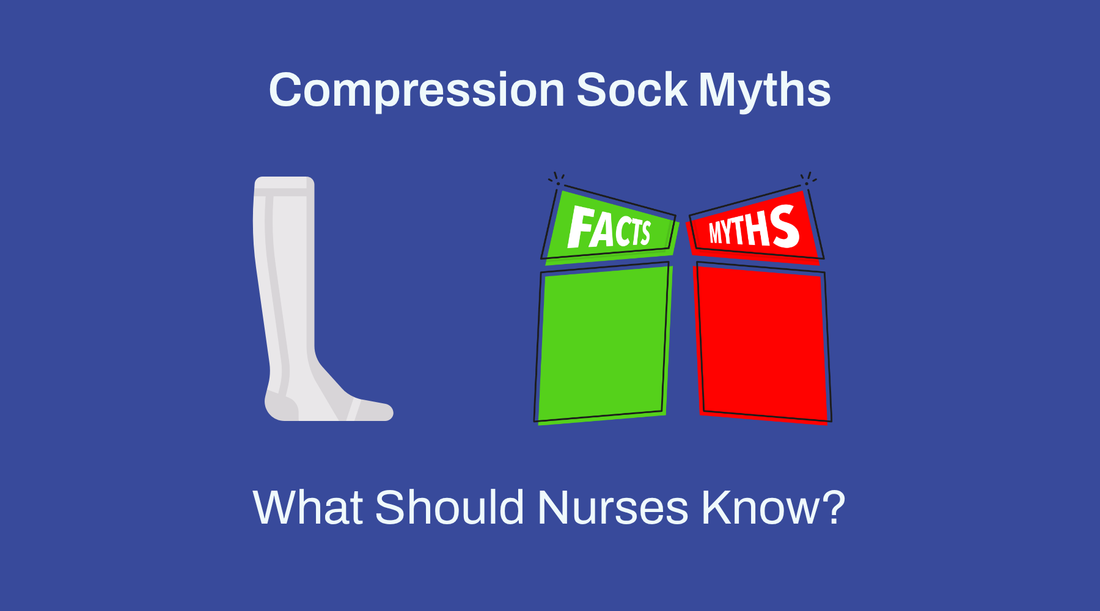
Compression Sock Myths: What Nurses Should Know
Compression Sock Myths: What Nurses Should Know
Nurses rely on knowledge, precision, and evidence-based practice to make smart decisions at work. Yet when it comes to their own wellness, misinformation still lingers—especially around compression socks.
Are they uncomfortable? Too tight? Only for older patients?
The truth is, compression socks have evolved far beyond their clinical stereotypes. Today, they’re one of the most effective tools for maintaining circulation, preventing fatigue, and supporting long-term leg health—especially for healthcare professionals.
Let’s debunk the most common myths.
Myth #1: Compression Socks Are Only for Patients
Yes, compression therapy began as a medical intervention, but its benefits extend to anyone who spends long hours standing. For nurses, gravity and repetitive motion impair blood flow and cause discomfort.
Graduated compression improves venous return, reduces swelling, and lowers the risk of vein issues. They’re not just for recovery—they’re for prevention.
Myth #2: They’re Too Tight or Uncomfortable
If compression socks felt like a vice, the size or pressure level was wrong. Modern socks for nurses use 15–20 mmHg graduated compression—the most recommended level for active professionals.
Comfort features like soft cuffs, seamless toes, and breathable fabric make them easy to wear during long shifts. Knowing how to choose compression socks for long nursing shifts ensures the right balance of comfort and support.
Myth #3: All Compression Socks Are the Same
Quality varies widely. Some pairs are built for medical recovery, others for travel or athletics. The best nursing options include moderate graduated compression, knee-high coverage, breathable fabrics, and arch support.
Neotrek designs with all these factors in mind, using REPREVE® fibers for durability and comfort shift after shift.
Myth #4: They’re Too Hot for Year-Round Use
High-quality compression socks regulate temperature with breathable knits and moisture-wicking yarns. Instead of trapping heat, they help keep legs cool and dry—even in warm hospital environments.
Myth #5: You Don’t Need Them If You’re Young or Healthy
Waiting until swelling or varicose veins appear misses the main advantage: prevention. Like proper shoes or posture, proactive use protects your body over the long term.
Even healthy nurses benefit from daily support—and switching from regular socks to compression is an easy change with lasting impact.
Myth #6: Compression Socks Are Bulky or Unattractive
Today’s nurse compression socks are streamlined, neutral, and designed to pair with any uniform. Neotrek’s versatile gray style offers refined support without bulky seams or loud patterns.
What Compression Socks Actually Do—for Nurses
High-quality compression socks provide:
- Improved circulation during long shifts
- Reduced swelling and inflammation
- Less fatigue and faster recovery
- Long-term prevention of venous issues
They’re not hype—they’re healthcare-grade tools that quietly keep you moving and feeling better.
Don’t Let Myths Hold You Back
Misinformation leads to missed opportunities—especially when it comes to protecting your health on the job. Now that the myths are debunked, the decision is clear.
Do compression socks help nurses? Absolutely.
Are they needed? Without a doubt.
What should you wear? Socks designed with your profession in mind.
Experience the difference yourself—shop Neotrek’s nurse compression socks and step into lasting support.